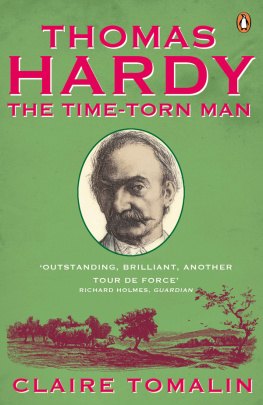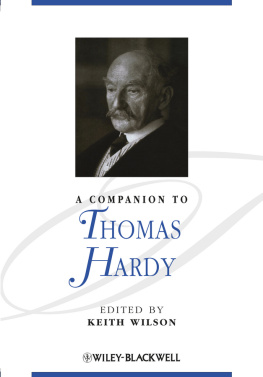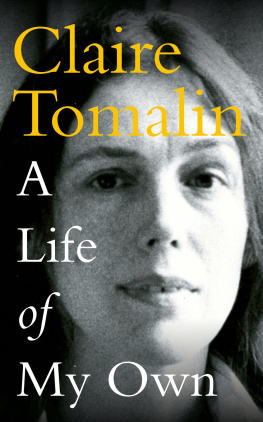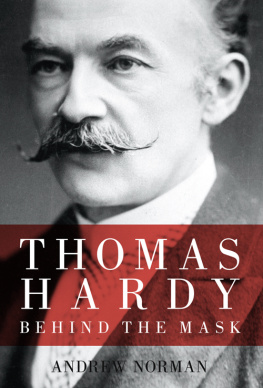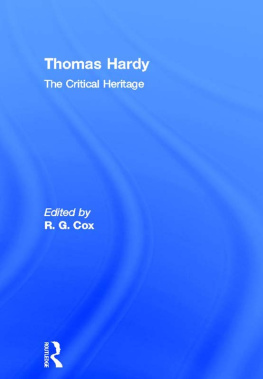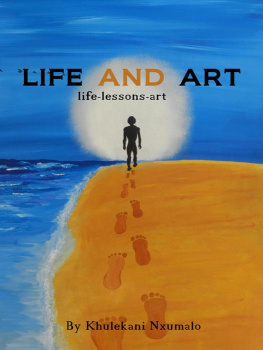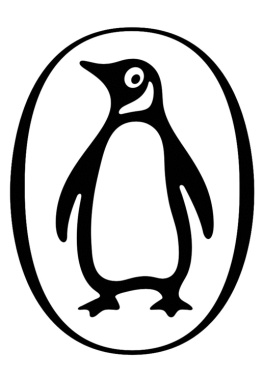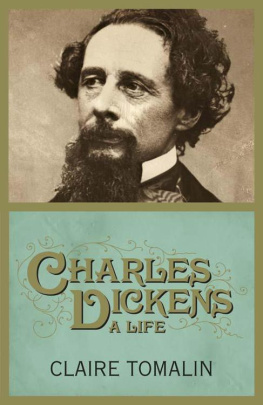
PENGUIN BOOKS
PENGUIN BOOKS
THOMAS HARDY
Painfully gripping acute and original. A great biographer Carole Angier, Literary Review
Perceptive and intelligent. Tomalin brings time and place and people tenaciously alive Alan Taylor, Sunday Herald
Scrupulous and luminous biography Chicago Tribune
Excellent high- and fair-minded, authoritative Caroline Moore, Sunday Telegraph
A splendid picture of Hardy Raymond Carr, Spectator
A fascinating insight into the great Victorian novelist and poets life Harpers Bazaar
Sparky, compelling, immediately gripping Jackie Wullschlager, Financial Times
Tomalins biography allows the reader to muse on the relationship between life and fiction, between poetry and the novel. One returns to Thomas Hardy with renewed pleasure and surprise Tim Parks, New York Review of Books
Fresh eyes and vivacious prose John Sutherland, Evening Standard
Exemplary written with clarity and understanding. It is, in short, a triumph Tatler
Tomalins special gift as a biographer is her engaged concern for the people she writes about John Carey, Sunday Times
Sure-footed and compassionate Dinah Birch, Independent
One of the countrys finest biographers Book
Tomalins insights are always rewarding John Burnside, The Times
By the same author
The Life and Death of Mary Wollstonecraft
Shelley and His World
Katherine Mansfield: A Secret Life
The Invisible Woman: The Story of Nelly Ternan
and Charles Dickens
The Winter Wife
Mrs Jordans Profession
Jane Austen: A Life
Several Strangers: Writing from Three Decades
Samuel Pepys: The Unequalled Self
ABOUT THE AUTHOR
Claire Tomalin worked in publishing and journalism for many years. She was literary editor first of the New Statesman and then the Sunday Times , before devoting herself to writing full time. She is the author of eight highly acclaimed biographies: The Life and Death of Mary Wollstonecraft , which won the Whitbread First Book Award; Shelley and His World; Katherine Mansfield: A Secret Life ; The Invisible Woman: The Story of Nelly Ternan and Charles Dickens , which won the Hawthornden Prize, the NCR Book Award and the James Tait Black Memorial Prize for Biography; Mrs Jordans Profession; Jane Austen: A Life ; Samuel Pepys: The Unequalled Self , which was the 2002 Whitbread Book of the Year; Thomas Hardy: The Time-Torn Man; and, most recently, Charles Dickens: A Life.
She lives in London with her husband, the novelist and playwright Michael Frayn.
Illustrations
FIRST INSET
The view of Dorchester that Hardy knew from his earliest years
Hardys drawing of his birthplace at Higher Bockhampton, which shows it as it was in the 1890s
. Hardys parents in old age
Melbury House, the seat of the Earls of Ilchester
Stinsford House, near Bockhampton
Hardys first school at Lower Bockhampton
The Revd Moule and his family on the lawn in front of his Fordington vicarage
Horace Moule, Hardys great friend and mentor
Hardy at nineteen, when he was an architectural pupil in Dorchester
The garden terrace of the rectory at St Juliot, showing the Revd Cadell Holder, his wife, Helen, and her sister, Emma Gifford
Emma Gifford
Hardy at thirty
Hardys sketch of Emma on her knees searching in the river
Emmas sketch of Hardy holding a flag
Emmas drawing of the summerhouse in the garden of the St Juliot rectory, where she and Hardy often sat together
Emmas drawings of the Boscastle Valley and The Watercourse of the Valency River
A page of Emmas honeymoon diary
Riverside Villas, near Sturminster Newton, where Hardy and Emma enjoyed two happy years from 1876
The view of the Blackmore Vale from Hardys upstairs study window at Riverside Villas, where he wrote The Return of the Native
SECOND INSET
Hardy at thirty-four, looking the part of the successful Victorian literary man
Leslie Stephen, the editor of the Cornhill, who commissioned Far from the Madding Crowd
The house in Tooting taken by the Hardys in 1878
Max Gate, the house designed by Hardy and built by his brother. Hardy and Emma moved there in June 1885
The hall at Max Gate
Hardy dressed for the road, with his bicycle
Mrs Florence Henniker, with whom Hardy fell in love in 1893
Emma Hardy in her later years, dressed for one of her garden parties
Drawing of Florence Dugdale by William Strang
Florence Dugdale and Hardy on the beach at Aldeburgh in 1909
Florence, Hardy and their dog Wessex
Luncheon visit to the Hardys by the Prince of Wales in 1923
Hardy in 1924: a human being, not the great man
Augustus Johns 1923 portrait of Hardy
Prologue
In November of 1912 an ageing writer lost his wife. He was not expecting her to die, but then he had not been taking much notice of her for some time. They had run out of conversation, he was in love with another woman, and for some years now she had withdrawn from him, choosing to sleep alone in a small room in the attic. She spent much of the day up there too, having her breakfast and lunch brought up, and reading and writing in a second attic room. She had just reached her seventy-second birthday. There had been no celebrations. She had seemed unwell, the doctor had seen her, but she had refused to allow him to examine her, and he had given no warning that there might be anything seriously wrong. At about eight in the morning on 27 November her young maid Dolly went to her as usual and found her alarmingly changed since bedtime the night before, when the girl had attended her. Now she was moaning and terribly ill. She did not complain or ask for the doctor to be sent for, but she did ask Dolly to fetch her husband. Dolly ran down to the master in his study, where he was making an early start on his days work. He told her to straighten her collar she wore a blue dress with a white collar when she was working then he climbed the narrow stairs to his wifes room and went up to the bed. He spoke her name: Em, Em dont you know me? But she was already unconscious, and within minutes she had stopped breathing. Emma Hardy was dead.
This is the moment when Thomas Hardy became a great poet. He was a long-established, admired and popular writer, acknowledged as a great novelist and, more recently, as a poet. His historical epic-drama had been greeted with interest and respect, and he had written many fine poems and a few outstanding ones. But it was the death of Emma that proved to be his best inspiration. Filled with sorrow and remorse for their estrangement, he had her body The gesture would have been remarkable in a lover who could not bear to be parted from the body of his mistress, but for an elderly husband who had for years been on bad terms with his wife it seems almost monstrously unconventional, until you realize that he was thinking of his situation quite differently. He had become a lover in mourning.
He began at once to revisit their early love in his mind with an intensity that expressed itself in a series of poems. One forgets all the recent years and differences,he wrote to a friend, and the mind goes back to the early times when each was much to the other in her case and mine intensely much.

